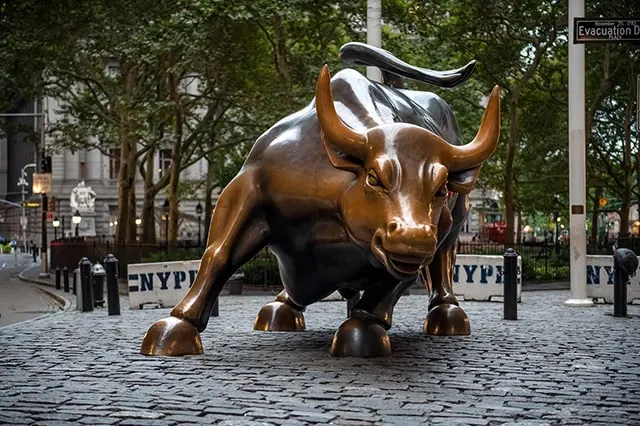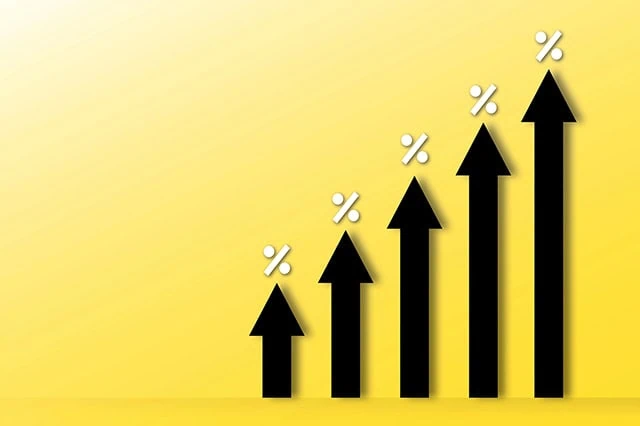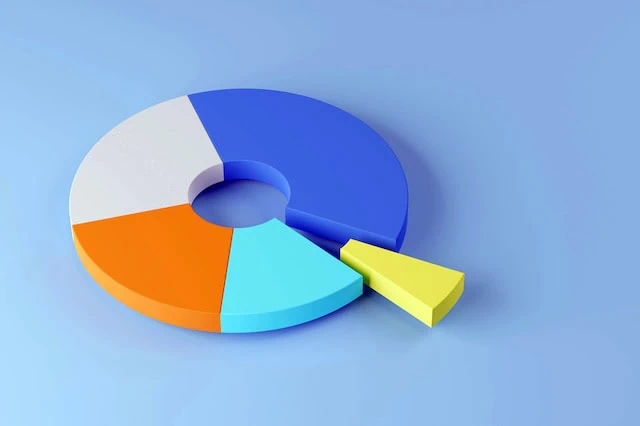Mutual funds are among the most vital instruments in the investor tool belt.
You could spend countless hours (that you don’t have) researching hundreds or thousands of stocks and bonds. Then you could spend hundreds of thousands of dollars (that you also might not have) to buy all the individual stocks and bonds you’d need to put together a truly diversified portfolio.
Or, you could do all of that at a fraction of the time and cost, and get similar if not better results, by purchasing a mutual fund or two with a few quick clicks.
Most investors agree, which is why trillions of dollars remain parked in mutual funds today. However, while mutual funds are a valuable shortcut, they can’t help you completely sidestep the decision-making process—because you still have to determine the best mutual funds to buy out of a field of literally thousands.
But I can help with that. Today, I’m going to show you our recently overhauled list of the very best mutual funds you can buy right now. Whether you’re interested in something as simple as a core fund of blue-chip names or as complex as a state-specific municipal-bond fund—or one of the many investment categories in between—this list has something for you.
Disclaimer: This article does not constitute individualized investment advice. Securities, funds, and/or other investments appear for your consideration and not as personalized investment recommendations. Act at your own discretion.
How Were the Best Mutual Funds Selected?

According to the Investment Company Institute’s most recent annual Fact Book, investors have plowed $25.5 trillion in assets into nearly 8,600 U.S. mutual funds. But according to that same Fact Book, the median number of mutual funds that a given household owns is … three.
Selecting the three (or two or four or however many mutual funds you personally need) best mutual funds for you from a universe of thousands is awfully unrealistic. So I’ve whittled that list down into a more digestible group numbering in the teens.
As usual, I started my search with a quality screen, including only mutual funds that have earned a Gold Morningstar Medalist rating*. Morningstar has two ratings systems—the Star ratings and the Medalist ratings. The latter are a forward-looking analytical view of a fund. Per Morningstar:
“For actively managed funds, the top three ratings of Gold, Silver, and Bronze all indicate that our analysts expect the rated investment vehicle to produce positive alpha relative to its Morningstar Category index over the long term, meaning a period of at least five years. For passive strategies, the same ratings indicate that we expect the fund to deliver alpha relative to its Morningstar Category index that is above the lesser of the category median or zero over the long term.”
As I’ve written in other Young and the Invested articles, a Medalist rating doesn’t mean Morningstar is necessarily bullish on the underlying asset class or categorization. It’s merely an expression of confidence in the fund compared to its peers.
To narrow the list further, I also required the following:
- No loads: In addition to annual expenses, some funds charge additional fees, including “loads.” For instance, if you invested $10,000 in a mutual fund with a 5% front-end load, the mutual fund provider would immediately take $500 out in fees. So, you’d already be starting behind the 8-ball, investing just $9,500 to start with. The funds here have no sales charges.
- Reasonable investment minimums: The maximum investment minimum for inclusion is $5,000. But only one fund on this list requires that much to start. Most require between $1,000 and $2,500, and a few funds have zero investment minimums. Also, some fund providers explicitly lay out lower investment minimums for specific accounts, such as individual retirement accounts (IRAs). T. Rowe Price, for instance, has $2,500 minimum initial investments on many of its funds, but lowers that minimum to $1,000 when investing through an IRA.
- 5-star Morningstar Star ratings*: Per Morningstar: “The Morningstar Rating methodology rates funds within the same Morningstar Category based on an enhanced Morningstar Risk-Adjusted Return measure. To receive a Morningstar Rating, a fund must have a record of more than three years.” While past performance isn’t necessarily indicative of future returns, it can be helpful to know a fund’s track record—especially when assessing actively managed funds and the people choosing investments for them.*
- Broad availability: Many mutual funds have several share classes, many of which are limited to certain types of accounts, like, say, only for 401(k)s or only for wealth management clients. All funds here are Investor-class or other shares that are generally considered to be widely available to retail investors.
From the much more manageable resulting list, I’ve selected a group of mutual funds that provide a wide array of core and tactical strategies, ensuring there’s at least one fund, if not many funds, for just about everyone.
* Mutual funds selected for 2025 all started the year with Gold Medalist ratings and five-star Morningstar ratings. Funds will remain on the list throughout 2025 as long as they maintain a minimum of Bronze and four stars, respectively. Funds that fall below those thresholds will be replaced.
The Best Mutual Funds to Buy Now

The following represent some of the best mutual funds you can buy at the moment—and they’re priced quite reasonably too.
While annual expense ratios weren’t used explicitly in the selection process, the vast majority of these funds sport below-category-average fees. It makes sense, too: Fees eat into a fund’s performance, so providers that charge onerous management expenses are, in a way, handicapping their fund’s returns. Meanwhile, providers with lower fees get a bit of an intrinsic performance edge.
A few final notes to keep in mind as you’re reading this list:
- All of these funds have no loads, but brokerage commission fees might apply; check your brokerage before purchasing.
- Your brokerage might require a larger minimum initial investment for mutual funds than the fund itself requires.
- Some brokerage accounts might not let you purchase certain funds, even if they’re generally available to retail investors. (For instance, you might be able to buy the completely made-up Woodley Investments Large-Cap Fund at Schwab, but not at Fidelity.)
Lastly, this isn’t a ranking of the best funds. Every fund on here rates as excellent already. This is just listed in a natural progression of various portfolio needs, starting broadly with different stock flavors and ending with a few bond funds.
With all that out of the way, let’s look at the best mutual funds you can buy.
1. Fidelity 500 Index Fund

- Style: U.S. large-cap stock
- Assets under management: $722.9 billion
- Dividend yield: 1.1%
- Expense ratio: 0.015%, or 15¢ per year for every $1,000 invested
- Minimum initial investment: None
Investors are frequently told to start building their portfolio’s foundation with an equity fund that invests in American large-cap companies. These stocks provide a relatively high amount of stability while still offering some upside potential—and in many cases, returns from dividends, too.
One of the most common ways of getting this exposure is through an S&P 500 fund such as the Fidelity 500 Index Fund (FXAIX). This Fidelity index fund simply tracks the S&P 500 Index—a collection of 500 of the largest American companies, and a barometer of the American stock market.
To be included in this index, a company must have a market capitalization of at least $22.7 billion, its shares must be highly liquid (shares are frequently bought and sold), and at least 50% of its outstanding shares must be available for public trading, among other criteria. A company must also have positive earnings in the most recent quarter, and the sum of its previous four quarters must be positive—two traits that weed out at least a few massive firms that would otherwise be included. (Note: Once a company becomes an S&P 500 component, it’s not automatically kicked out if it fails to meet all of the criteria. However, the selection committee would take this under consideration and possibly boot the company.)
People like to consider the S&P 500 a reflection of the U.S. economy. But it’s hardly perfect, not to mention the U.S. economy can tilt toward certain sectors, and those tilts can change over time. For instance, right now, the technology sector accounts for a whopping third of FXAIX’s assets. Real estate, materials, and utilities merit less than 3% apiece. This is in no small part because, like many indexes, the S&P 500 is market capitalization-weighted, which means the greater the size of the company, the more “weight” it’s given in the index. Currently, trillion-dollar-plus companies Nvidia (NVDA), Microsoft (MSFT), and Apple (AAPL) sit atop Fidelity 500 Index Fund’s holdings list.
Turnover (how much the fund tends to buy and sell holdings) is always low, given that only a handful of stocks enter or leave the index in any given year. This tamps down and sometimes even eliminates capital-gains distributions, which can receive unfavorable tax treatment, making FXAIX an extremely tax-efficient option for taxable brokerage accounts.
But here’s a good question: Why should we offload this core positioning to a brainless index fund?
The S&P 500 Index is commonly used as a performance benchmark for mutual funds that invest in U.S.-based large-cap stocks. But most fund managers who run these products typically struggle to beat this benchmark. Indeed, according to S&P Dow Jones Indices, the vast majority of active large-cap U.S. equity funds (nearly 90%!) failed to beat the S&P 500 over the trailing 15-year period.
Rather than try to beat the benchmark, purchasing FXAIX exposes you to that benchmark. And once you add in its exceedingly low costs, Fidelity 500 Index Fund isn’t just one of the best Fidelity funds to buy—it’s one of the best mutual funds you can buy across all providers.
That said, FXAIX is the only index fund featured here today. Very few index funds met the underlying qualifications, and those that did either had too niche of a strategy to make the final cut, or weren’t as good as a competing fund that ultimately landed on this list. While tracking a benchmark is cost-effective and can be enough to topple a majority of managers, a few humans rise above the benchmarks in virtually every category and earn their funds top honors.
Want to learn more about FXAIX? Check out the Fidelity provider site.
Related: The 10 Best Index Funds You Can Buy
2. T. Rowe Price Dividend Growth Fund

- Style: U.S. large-cap dividend-growth stock
- Assets under management: $24.3 billion
- Dividend yield: 0.9%
- Expense ratio: 0.64%, or $6.40 per year for every $1,000 invested
- Minimum initial investment: $2,500
If you’d prefer a large-cap “blend” fund (a mix of value and growth, like the S&P 500) that’s actively managed, you can look to one of T. Rowe Price’s best mutual funds:
T. Rowe Price Dividend Growth Fund (PRDGX).
If you saw a fund with “dividend” in its name, and guessed that the goal was superior yield, you’d be correct more often than not, but you wouldn’t be right all the time. Some of the time, you’d be looking at a dividend-growth fund like PRDGX, which focuses more on payouts that increase over time and less on current yield.
What’s the appeal? Well, even dividend stocks with a low yield right now can deliver a higher “yield on cost” down the road. Yield on cost is what you’re actually earning based on the price at which you bought the stock. (Example: A $100 stock paying $1 in annual dividends yields 1%. But because you bought the stock at $50, your yield on cost is 2%.)
Also, dividend-growth stocks tend to be high-quality equities. After all, you can’t sustainably increase how much cash you’re shelling out to shareholders if you’re unable to turn a profit—you need strong financials and excellent cash flows. So dividend growth is often considered a quality screen of sorts that ensures the fund owns a higher grade of company.
That’s what you get with PRDGX. “Manager Tom Huber focuses on financially healthy companies that can sustain above-average payout growth as he believes dividend growers offer outperformance with lower volatility,” Morningstar Senior Analyst Stephen Welch says about this Gold-rated fund.
But one thing to note: Huber is tasked with building a portfolio of companies “that have a strong track record of paying dividends or that are expected to increase their dividends over time.” I emphasize “or” because it’s … well, different.
Many dividend-growth index funds are required, thanks to the rules that govern the index, to own companies that have improved their payouts without interruption for some set period of time. That’s not the case with T. Rowe Price Dividend Growth. Huber has full discretion here. For instance, holding Ross Stores (ROST) actually suspended its distribution for a few quarters in 2020—and was booted from the Dividend Aristocrats as a result. However, it resumed payouts in 2021 at its previous level and has raised each year since then, so it’s certainly a dividend grower once more.
For the most part, however, this U.S.-centric portfolio of about 100 stocks is full of blue-chips such as Visa (V), Walmart (WMT), and Chubb (CB) with solid dividend-growth histories.
The actively managed T. Rowe Price Dividend Growth ETF (TDVG) offers similar exposure and charges 0.50% annually.
Want to learn more about PRDGX? Check out the T. Rowe Price provider site.
Related: 8 Best Stock Portfolio Tracking Apps [Stock Portfolio Trackers]
3. FPA Queens Road Small Cap Value Fund

- Style: U.S. small-cap value stock
- Assets under management: $1.1 billion
- Dividend yield: 0.7%
- Expense ratio: 0.94%, or $9.40 per year for every $1,000 invested
- Minimum initial investment: $1,500
Naturally, you don’t need to limit yourself to just the market’s largest companies—you can (and often should) invest in companies of all sizes.
As a general rule, smaller companies (usually considered to be those with market capitalizations of $2 billion or less) have more growth potential than larger firms. For one, as they say, it’s much easier to double your revenues from $1 million than $1 billion. And as these stocks become noticed by institutional investors and fund managers, or begin qualifying for certain indexes, they can begin to enjoy large-scale investments that drive their prices even higher.
However, FPA Queens Road Small Cap Value Fund (QRSVX) takes a different tack with small caps. Instead of targeting splashy growth plays, it looks for little fish that have gone unnoticed in the large Wall Street pond.
Since the fund’s inception in 2002, Portfolio Manager Steven Scruggs has used a four-pillar process to identify undervalued small companies. Specifically, he looks for companies with strong balance sheets and free cash flow (FCF), manageable debt, competent leaders with a successful track record, and discounts to FCF, among other things. But he doesn’t completely eschew growth—FPA wants to “own companies in growing industries with stable, competitive dynamics and favorable economics.”
A critical difference between many index funds and actively managed funds is portfolio size. It’s fairly common for index funds’ holdings to number in the hundreds if not thousands, whereas most actively managed funds keep their investments in the double digits. Why does this matter? Consider this: The Vanguard Small-Cap ETF (VB), a prominent small-company index fund, spreads its weight across more than 1,300 stocks—and a consequence of that is that no stock accounts for more than half a percent’s worth of assets. But FPA’s fund invests in just 50 stocks, with current top holdings InterDigital (IDCC) and Fabrinet (FN) each accounting for nearly 5% of the fund’s performance.
In other words, QRSVX isn’t nearly as diversified as your basic index fund—which means less protection against single-stock disasters, sure, but it also means the potential to harness more outperformance from Scruggs’ selections. And harness it has—FPA Queens Road Small Cap Value has beaten the category average over every meaningful time period.
Turnover of 15%, which means 15% of the fund’s holdings change hands every year on average, is very low for a small-cap fund. Not only does this tamp down on taxable capital-gains distributions, but it also creates less of a trading-cost drag on performance.
And while Queens Road Small Cap Value recently stepped down from a Gold Medalist rating to Silver, Morningstar remains overwhelmingly positive about the fund: “FPA Queens Road Small Cap Value features a good manager and a risk-aware process, both of which are well-established, yet have gotten even better in recent years,” Morningstar Associate Director Tony Thomas says.
Want to learn more about QRSVX? Check out the FPA provider site.
Do you want to get serious about saving and planning for retirement? Sign up for Retire With Riley, Young and the Invested’s free retirement planning newsletter.
4. Value Line Mid Cap Focused Fund

- Style: U.S. mid-cap growth stock
- Assets under management: $1.8 billion
- Dividend yield: 0.1%
- Expense ratio: 1.08%, or $10.80 per year for every $1,000 invested
- Minimum initial investment: $1,000
We frequently refer to mid-cap stocks—companies worth $2 billion to $10 billion by market cap—as “Goldilocks” stocks. That’s because they enjoy some qualities of their large-cap brethren (some size, some stability, revenue stream diversity, some access to capital) and some qualities of smaller firms (they’re nimble and have more upside potential). That combination of traits is what Goldilocks would call “just right.”
“In any given 1-year rolling period since 2003, small-, mid-, and large-cap stocks have outperformed 33%, 26%, and 41% of the time,” says investment company Hennessy Funds. “However, the longer mid-cap stocks are held, the more often they outperformed. In fact, 60% of the time, mid-caps outperformed small- and large-cap stocks over any 10-year rolling period in the past 20 years.”
Better still? During the 20-year period (through 9/30/23) that Hennessy studied, it found that while mid-caps delivered higher risk than large caps, they delivered better returns … and they generated both lower risk and higher returns than small caps.
Value Line Mid Cap Focused Fund (VLIFX) targets the “growthier” cohort of these medium-sized corporations.
Portfolio Manager Stephen Grant is tasked with building a portfolio of 25 to 40 growth-oriented mid-cap stocks. He’s given a fairly wide definition as to what constitutes “mid-cap” (specifically, companies with market caps of between $7 billion and $65 billion), so the fund tends to lean toward large-cap stocks.
And as far as growth goes? Guidance, as it sometimes is in actively managed funds, is vague, with the fund targeting companies that “generally have strong market positions in growing industries that may enable those companies to increase future sales and earnings at an above average pace in the coming years.” However, Grant also uses the Value Line Timeliness Ranking System, a proprietary quantitative ranking system that ranks probable market performance estimates for stocks.
Currently, this 37-stock portfolio is extremely heavy in technology (35%), industrials (28%), and health care (16%), holding names such as software firm Tyler Technologies (TYL) and index provider MSCI (MSCI). While the sector weights might change over time, it’s a good bet that technology and cyclicals will feature prominently given the mandate to go after growth.
Value Line Mid Cap Focused Fund is also a case of “you get what you pay for.” This is one of the highest-fee products on our list of the best mutual funds to buy—even Morningstar points out that “the strategy’s lofty fees are a high hurdle to clear.” But despite a recent downgrade to Bronze, long-term performance is very good, with VLIFX’s returns ranking in the top 20% of funds in the trailing five-, 10- and 15-year periods.
Make Young and the Invested your preferred news source on Google
Simply go to your preferences page and select the ✓ box for Young and the Invested. Once you’ve made this update, you’ll see Young and the Invested show up more often in Google’s “Top Stories” feed, as well as in a dedicated “From Your Sources” section on Google’s search results page.
Related: 7 High-Quality, High-Yield Dividend Stocks
5. Monongahela All Cap Value Fund

- Style: U.S. all-cap value stock
- Assets under management: $37.1 million
- Dividend yield: 1.0%
- Expense ratio: 0.85%*, or $8.50 per year for every $1,000 invested
- Minimum initial investment: $5,000
The smallest fund on this list by a country mile is the Monongahela All Cap Value Fund (MCMVX)—a well-regarded but meager fund with just $37 million in assets under management. It’s a fun juxtaposition given it has one of the broadest mandates: find domestic value stocks of all shapes and sizes.
Many all-cap funds are “total market” funds that seek to own as much of a stock market (say, the U.S. stock market, or international stock markets) as possible. The result is portfolios of thousands of stocks that, while including some exposure to small- and mid-cap stocks, are typically market-cap weighted and thus mostly invested in large caps.
Not Monongahela All Cap Value.
Co-Managers Mark and Michael Rodgers might be able to select from a vast universe of value-priced stocks, but they narrow it down to a tight portfolio of around 45 stocks that are far more evenly spread across the market capitalization spectrum. In this case, MCMVX is a little more than 10% invested in large caps, 55% in mid-caps, and the rest in small companies.
The strategy itself isn’t complicated. Management selects stocks they believe are trading well beneath their intrinsic values and can also offer both appreciation and income. At whatever point a holding is determined to be overvalued, no longer offers growth potential, or experiences a significant detrimental change to the investing thesis, MCMVX will reduce or exit the position.
Right now, the fund is heaviest in industrials, which make up a little less than a quarter of assets. MCMVX also has double-digit holdings in the technology, consumer staples, consumer discretionary, and health care sectors. However, several other sectors barely hit the radar, and real estate and communication services are completely unrepresented. Top holdings include engineered products maker Curtiss-Wright (CW), optical material and semiconductor manufacturer Coherent (COHR), and Westinghouse Air Brake Technologies Corporation (WAB), which … well, I think you can guess what the mercifully nicknamed Wabtec does.
MCMVX, which is now rated Silver, has been just so-so over the past year or so, but it has been stellar over the long term, sitting among the top 5% of category funds over the trailing 10-year period.
* 1.70% gross expense ratio is reduced with a 0.85% fee waiver until at least Sept. 1, 2026.
Want to learn more about MCMVX? Check out the Monongahela Capital Management provider site.
Related: 7 Best High-Dividend ETFs for Income-Hungry Investors
6. T. Rowe Price All-Cap Opportunities Fund

- Style: U.S. all-cap growth stock
- Assets under management: $17.3 billion
- Dividend yield: 0.1%
- Expense ratio: 0.79%, or $7.90 per year for every $1,000 invested
- Minimum initial investment: $2,500
If you’d like, you can also take a growth tack to all-cap exposure.
T. Rowe Price All-Cap Opportunities Fund (PRWAX) is a growth-stock fund that doesn’t discriminate by size. It’s happy to hold small-, mid-, and large-cap stocks as long as they exhibit the qualities desired by manager Justin White: earnings growth beyond the average of the Russell 3000 Index, favorable company fundamentals, effective management, and reasonable stock valuations.
Well, PRWAX might be open to companies of all sizes, but it clearly has favorites. The fund allocates three-quarters of assets to large-cap stocks, with the rest split 15/10 between mids and smalls. Nothing odd there. White is content to hold just about 100 or so stocks (110 currently), and with more than $17 billion to work with, he wouldn’t want to move the market in smaller companies by funneling too much money into them.
Top holdings give us plenty of what we’d see out of a typical large-cap fund, too—Nvidia, Microsoft, Apple, and other “Magnificent 7” stocks all feature prominently in the portfolio. Technology earns the greatest weight at 35% of assets, which is about on par with the market. But the fund is overweight in a few sectors, including financials and communication services, while pared back in a few others, including consumer staples and industrials.
“T. Rowe Price All-Cap Opportunities’ portfolio manager has the skills to get the most out of a deep analyst team and a flexible investment process,” says Adam Sabban, senior analyst at Morningstar. He adds that while the fund was recently reduced to Silver, “a drop in the Morningstar Medalist rating of some share classes isn’t attributable to reduced conviction in the strategy’s People or Process ratings but instead reflects a change in the way Morningstar calculates the excess return opportunity for funds.”
PRWAX is no index fund, and it’s not priced like one—though at 0.79% annually, it’s right at the large-cap category average. But performance has been worth it, with returns sitting among the top 15% of funds over the trailing 10 and 15 years. That’s plenty good enough to land All-Cap Opportunities on our list of the best mutual funds you can buy.
Want to learn more about PRWAX? Check out the T. Rowe Price provider site.
7. Fidelity Select Semiconductors Portfolio

- Style: Industry (Semiconductors)
- Assets under management: $26.3 billion
- Dividend yield: <0.1%
- Expense ratio: 0.62%, or $6.20 per year for every $1,000 invested
- Minimum initial investment: None
Fidelity has roughly 30 “Select” funds—the company’s name for its sector- and industry-specific funds. Several of these funds currently boast Morningstar Gold Medalist ratings. However, given that many investors have a heightened interest in the technology sector, I figured a tech-focused offering was the top fit for our best mutual funds list.
Fidelity Select Semiconductors Portfolio (FSELX) is an actively managed industry fund focused on semiconductor stocks, which have a pretty straightforward bull case: As both our personal and business worlds become increasingly dependent on technology, semiconductor companies—which design and manufacture one of the most essential components of technology—stand to benefit. And some of the greatest opportunities rest within those semiconductor companies powering emergent and high-growth technologies such as data centers, cloud computing, and artificial intelligence.
Adam Benjamin, who has led FSELX for five years, aims to beat the broader semiconductor industry by picking winners and losers within the space. In addition to single-company research, Benjamin also attempts to identify themes that will impact the largest end markets, and determine how technology disruptors might impact incumbent companies.
Fidelity Select Semiconductors’ 54-stock portfolio might seem tight, but it’s pretty standard for a single-industry fund. The same goes for the massive 26% weight in Nvidia—as it goes, so too goes most semiconductor portfolios, not just Benjamin’s pick list.
Kudos to Fidelity Select Semiconductors: In addition to its Gold Medalist rating, it has beaten every meaningful benchmark—the S&P 500, the technology sector, the MSCI US IMI Information Technology 25/50 Index—over every meaningful time period. And over the trailing three-, five-, 10- and 15-year periods, it has been in either the top 2% or 1% of products in its Morningstar category: tech-stock funds.
Morningstar, in explaining its Gold Medalist rating, also points out that “Benjamin has invested between $100,000 and $500,000 in the strategy, making an effort to align interests with shareholders and establish a proper incentive structure.” To be clear: Fund managers virtually always have investors’ best interests in mind, but when a manager actually has tangible skin in the game, that often provides additional confidence and comfort in the product.
Want to learn more about FSELX? Check out the Fidelity provider site.
Related: 7 Best Fidelity ETFs to Buy
8. MoA International Fund

- Style: International large-cap value stock
- Assets under management: $2.1 billion
- Dividend yield: 3.1%
- Expense ratio: 0.33%*, or $3.30 per year for every $1,000 invested
- Minimum initial investment: $1,000
The U.S. has been one of the world’s most fruitful stock markets for decades. So if you believe in the American economy’s ability to keep growing, naturally, you should continue to invest the lion’s share of your money in U.S. assets.
Still, many advisors will tell you it’s important to diversify geographically, too—a little hedging of bets, sure, but also, there are hundreds of high-achieving companies scattered across the globe, and it makes sense to have a little exposure to those firms, too.
MoA International Fund (MAIFX) managers Jamie Zendel and Eric Lockenvitz have selected roughly 155 stocks across a number of “developed” markets—countries that might not have as much growth potential as “emerging” markets, but that are more politically and economically stable. For instance, Japan, the U.K., Germany, and France feature prominently in this portfolio.
Management uses quantitative models “focused on company valuation, earnings quality, and capital deployment,” so while MAIFX does indeed fall within the value category, it still has some growth elements. Its top 10 holdings are a “who’s who” of traditional international fund holdings, including German software firm SAP (SAP) and Swiss pharmaceutical names Novartis (NVS) and Roche (RHHBY).
“This strategy tends to hold larger, more growth-oriented companies compared with its average peer in the Foreign Large Value Morningstar Category,” Morningstar says, adding that it has also “favored high-quality stocks, including those with low financial leverage and solid returns on equity, compared with Morningstar Category peers during recent years.”
MAIFX struggled in 2024 but has a stellar track record otherwise, beating its category and index in most meaningful long-term time periods, and sitting within the top 20% of funds over the trailing 10 and 15 years. A good chunk of its returns come from an oversized dividend—international blue-chip dividend stocks tend to pay more than their U.S. counterparts, resulting in a 3%-plus yield that’s nearly thrice what you’d collect from an S&P 500 fund.
* 0.48% gross expense ratio is reduced with a 0.15% fee waiver until at least April 30, 2026.
Want to learn more about MAIFX? Check out the Mutual of America Capital Management provider site.
Related: 13 Dividend Kings for Royally Resilient Income
9. Fidelity Pacific Basin

- Style: Pacific/Asia stock
- Assets under management: $959.1 million
- Dividend yield: 4.4%
- Expense ratio: 0.87%, or $8.70 per year for every $1,000 invested
- Minimum initial investment: None
Much like investors augment their core equity holdings with, say, large growth stocks or small-cap companies to generate outperformance, they also try to jazz up their core international holdings with region-specific funds, like our next Gold-rated entry.
The Fidelity Pacific Basin Fund (FPBFX) is an actively managed mutual fund that invests in stocks either located in, or tied economically to, the Pacific Basin. It’s still one of the most expensive Fidelity funds we talk about, but its 0.87% expense ratio, which was recently lowered, puts its cost well below the 1.10% Morningstar Category average fee for diversified Asian/Japanese funds.
And these fees fuel a solid product. Co-Managers Kirk Neureiter and Stephen Lieu target companies with strong, stable growth characteristics, solid free cash flow, and focused management teams, among other traits.
Fidelity Pacific Basin is a mix of developed and emerging markets, with established Japan hoovering up the largest chunk of assets (31%), followed by China (26%), Taiwan (11%), and South Korea (10%). All told, you’re getting exposure to more than a dozen countries, including a small peppering of U.S. exposure. (Remember: Holdings can merely be “tied economically” to the Pacific Basin’s fortunes.)
While not market cap-weighted, the roughly 100-stock portfolio predominantly consists of large-cap stocks (60%), though it does hold some mid-caps (20%) and small firms (10%). Top holdings are also large-company-heavy; management has placed the greatest number of its chips behind names including Taiwan Semiconductor (TSM), Chinese e-commerce firm Tencent (TCEHY), and Japan gaming giant Nintendo (NTDOY).
There aren’t many funds in its category, but Pacific Basin has been the best there is over the trailing one-, three-, 10-, and 15-year periods. It has also clobbered the category average over every meaningful time frame.
Want to learn more about FPBFX? Check out the Fidelity provider site.
Related: Best Fidelity Retirement Funds for a 401(k) Plan
10. Dodge & Cox Income Fund

- Style: Intermediate-term core-plus bond
- Assets under management: $101.4 billion
- SEC yield: 4.3%*
- Expense ratio: 0.41%, or $4.10 per year for every $1,000 invested
- Minimum initial investment: $2,500
Most investors need some exposure to bonds, which is debt that’s issued by governments, companies, and other entities. Their interest payments and relative lack of volatility make them an excellent tool for providing a portfolio with stability and income. But how much bond exposure you need will vary by age—because they’re better at protecting wealth than growing it, people typically start with little in the way of bond holdings earlier in life, then gradually hold more bonds as they get closer to (and into) retirement. (Purpose-built investment products called target-date funds capture this dynamic automatically for investors.)
But individual bonds can be a hassle. Data and research on individual issues is much thinner than it is for publicly traded stocks. And some bonds have minimum investments in the tens of thousands of dollars. But you can blunt these problems by purchasing a bond fund, which allows you to invest in hundreds or even thousands of bonds with a single click—and, in many cases, very low fees.
Bond funds like Dodge & Cox Income Fund (DODIX) are, ahem, the gold standard.
DODIX is referred to as a “core-plus” bond fund, which means it can hold not only several types of core debt categories, but also noncore categories such as below-investment-grade (aka junk) corporate bonds and emerging-market debt.
While this Dodge & Cox fund is allowed to pursue “below-investment-grade debt, debt of non-U.S. issuers, and other structured products,” it’s not doing much of that at the moment. Currently, the portfolio is roughly half invested in securitized debt, another 30% in mostly investment-grade corporates, about 15% in Treasuries, and the rest in other government-related debt. Across all of that, DODIX does hold a little international debt, and about 5% of the portfolio is junk-rated, but past that, it’s more “core” than “core-plus”—but it’s an opportunistic fund, so that could change at any time.
Duration, a measure of interest-rate sensitivity, is 6.1 years. While the actual calculation is much more complex, this basically implies that for every 1-percentage-point increase in interest rates, DODIX would decline by 6.1% in the short term, and vice versa. It’s a moderate amount of risk, nothing more.
Past that, Dodge & Cox Income has beaten its category average and its benchmark index—the Bloomberg U.S. Aggregate Bond Index (the “Agg”), arguably the market’s most prominent broad bond index—in every meaningful time period. It’s also among the top 15% of all category funds over the trailing three-, five-, 10-, and 15-year periods.
* SEC yield reflects the interest earned across the most recent 30-day period.
Want to learn more about DODIX? Check out the Dodge & Cox provider site.
Related: Best Brokers for Short Selling
11. Vanguard Massachusetts Tax-Exempt Fund

- Style: Municipal bond
- Assets under management: $3.2 billion
- SEC yield: 3.7%
- Expense ratio: 0.09%, or 90¢ per year for every $1,000 invested
- Minimum initial investment: $3,000
Municipal bonds are typically issued by states, counties, cities, and other sub-federal government agencies. They’re sometimes used to fund general obligations and are backed by the municipality, though some are backed by the revenue a project would generate—say, a toll road. Muni bonds’ quality usually isn’t as high as similar federal debt but higher than comparable corporates.
But the glitziest trait of “munibonds” is their tax treatment. Municipal bonds’ interest is exempt from federal income taxes and net investment income tax (NIIT) … and if you live in the municipality in which it was issued, state and possibly even local income taxes. So whatever headline yield you see on a municipal bond, you’re probably earning much more once you factor in taxes.
Here’s a hypothetical example: You live in Maryland and make $275,000 per year. That puts you in the 35% federal tax bracket and the 5.75% Maryland state tax bracket, plus it requires you to pay an additional 3.8% in NIIT, for a total tax rate of 44.55%. You buy a Maryland municipal bond with a 3% yield, so your income isn’t subject to any of those taxes. Your “tax-equivalent yield” would be 5.4%. That means if you wanted to buy a normal taxable bond and get the same amount of post-tax yield as the muni, that taxable bond would have to yield 5.4%!
Vanguard Massachusetts Tax-Exempt Fund (VMATX), which yields 3.7% right now, holds nearly 950 Massachusetts munibonds, and it does so for a song—just 9 basis points annually. (A basis point is one one-hundredth of a percentage point.)
You do not have to live in Massachusetts to invest in this fund. If you’re a resident of another state, you could still buy VMATX and enjoy interest income free of federal taxes and NIITs, which would be up to 40.8% if you’re in the highest tax bracket. But obviously, Massachusetts residents get the maximum benefit from this fund, as they also get to back out their 5% state income tax) and the 4% surcharge for really high earners). In fact, Massachusetts residents paying the highest rates would need a whopping 7.4% from a taxable bond fund to break even with VMATX on a tax-equivalent basis.
Want to learn more about VMATX? Check out the Vanguard provider site.
Do you want to get serious about saving and planning for retirement? Sign up for Retire With Riley, Young and the Invested’s free retirement planning newsletter.
12. Vanguard Wellington Fund Investor Shares

- Style: Moderate allocation
- Assets under management: $119.5 billion
- Dividend yield: 1.9%
- Expense ratio: 0.25%, or $2.50 per year for every $1,000 invested
- Minimum initial investment: $3,000
It’s possible to get both your stock and bond exposure in a single fund. These funds are known by many names, including “balanced” or “allocation” funds, though I prefer to refer to them as “portfolios in a can.”
One of the best such funds—Vanguard Wellington Fund Investor Shares (VWELX)—is Vanguard’s oldest mutual fund, a product that debuted back in 1929. It’s managed by Wellington Management, an investment management company with nearly a century of operational experience.
Wellington, which is considered a moderate allocation fund, invests about two-thirds of assets in stocks, and the other third in bonds. The stock portion of the portfolio currently holds about 80 predominantly large-cap stocks with a median market cap of over $250 billion. It’s a “who’s who” of blue chips such as Microsoft, Nvidia, Apple, Amazon (AMZN) and Google parent Alphabet (GOOGL). It also includes a little exposure to international stocks—predominantly developed-country names like Unilever (UL) and AstraZeneca (AZN).
The bond portfolio is much more broadly diversified, at 1,500 investment-grade issues. Two-thirds of that is invested in corporate bonds, with another 20% or so in Treasuries and agency bonds. The rest is peppered across mortgage-backed securities (MBSes), foreign sovereign bonds, and other debt.
Put more succinctly: Wellington is a one-stop shop for your core large-cap stock and bond needs, and its 0.25% in annual expenses is very inexpensive for the skilled management and strong performance track record you’re getting in return. It’s one of the best Vanguard funds you can buy, and in our view, one of the best mutual funds you can buy.
Just make sure you’re considering your specific investment needs with this fund. If you don’t want a third of your portfolio to be in bonds, you’ll want to put additional money into individual stocks, equity funds, and/or alternative investments.
Want to learn more about VWELX? Check out the Vanguard provider site.
Related: 7 Best Vanguard Dividend Funds [Low-Cost Income]
13. T. Rowe Price Capital Appreciation

- Style: Aggressive allocation
- Assets under management: $71.1 billion
- Dividend yield: 2.0%
- Expense ratio: 0.71%*, or $7.10 per year for every $1,000 invested
- Minimum initial investment: $2,500
T. Rowe Price Capital Appreciation (PRWCX) comes at the tail end of this list—very much out of order—because of its status. Specifically, PRWCX is closed to most new investors. This is very much an exception to the rules I laid out above. However, I’m still including it among the best mutual funds you can buy both because of its extremely high quality and because this T. Rowe fund still might be available to some investors via select registered investment advisory (RIA) firms.
T. Rowe Price Capital Appreciation is another allocation fund—this one designed to invest at least half its assets in stocks, with the rest socked into various debt securities, including corporate bonds, government debt (Treasuries, MBSes, asset-backed securities), and bank loans. It’s primarily a domestic fund, but it can hold at least a quarter of its assets in foreign equities and debt. PRWCX, which currently holds around 200 securities, places 55% of assets in domestic shares and a little less than 30% in domestic bonds, sprinkling the rest around foreign bonds, foreign stock, preferred stock, convertible securities, and cash.
Morningstar Analyst Jason Kephart calls David Giroux, who has managed the fund since June 2006, “a manager unlike any other.”
“He’s displayed an innate ability to opportunistically invest across both equities and bonds, capturing pockets of value through strong stock selection and impressively timed shifts between stock and bond exposure,” Kephart says. “His execution of this strategy’s nimble, contrarian approach has delivered top-notch returns for its investors.”
Indeed, during his tenure, Giroux has beaten all of his category peers on both an absolute and risk-adjusted basis. He has also bested all peers over the trailing 10- and 15-year periods, and has beaten 95% of them over the trailing five years.
T. Rowe Price Capital Appreciation’s only sticking point is a critical one—availability. It’s largely closed, so most of us can’t just log into our browsers and buy this fund. But again, if your money is managed through certain RIAs, you might actually be able to buy shares of this gem … and if you find that you can, you should.
* 0.74% gross expense ratio is reduced with a 0.03% fee waiver until at least April 30, 2026.
Want to learn more about PRWCX? Check out the T. Rowe Price provider site.
Related: 10 Monthly Dividend Stocks for Frequent, Regular Income
The Best Mutual Funds: Frequently Asked Questions (FAQs)

Why does a fund’s expense ratio matter so much?
Every dollar you pay in expenses is a dollar that comes directly out of your returns. So, it is absolutely in your best interests to keep your expense ratios to an absolute minimum.
The expense ratio is the percentage of your investment lost each year to management fees, trading expenses and other fund expenses. This figure matters because every dollar not lost to expenses is a dollar that is available to grow and compound. And over an investing lifetime, even a half a percent can have a huge impact.
Example: If you invest just $1,000 in a fund generating 5% per year after fees, over a 30-year horizon, it will grow to $4,116. However, if you invested $1,000 in the same fund, but it had an additional 50 basis points in fees (so it only generated 4.5% per year in returns), it would grow to only $3,584 over the same period.
Why should I buy no-load funds?
You should buy no-load funds for the same reason you should look to buy funds with lower expenses: The less money that goes to the provider, the more money that goes into your pocket.
Let’s say you have $20,000, so you invest $10,000 into two different mutual funds. Mutual Fund A has no sales charge. Mutual Fund B has a 5% front-end sales charge. Both funds gain 7% annually over the next 30 years. And for the sake of simplicity in this example, we’ll say both funds don’t charge any annual expenses.
- Mutual Fund A will earn you $76,123 at the end of those 30 years.
- Mutual Fund B will earn you $72,317 at the end of those 30 years. You see, when you buy Mutual Fund B, that 5% front-end sales charge means the provider takes 5% out of your initial investment. So rather than investing $10,000 to start, you’re actually just investing $9,500. But you don’t lose just that $500—you also lose another $3,806 in “opportunity cost,” which is the additional money that $500 would have earned had it not been lost to fees!
Sales charges are a significant handicap to a fund’s performance, so it’s only worth buying funds with loads if they produce much superior performance compared to the other funds you’re considering.
Want to talk more about your financial goals or concerns? Our services include comprehensive financial planning, investment management, estate planning, taxes, and more! Schedule a call with Riley to discuss what you need, and what we can do for you.





![8 Best Portfolio Analysis Tools [Portfolio Analyzer Options] 37 best portfolio analysis tools](https://youngandtheinvested.com/wp-content/uploads/best-portfolio-analysis-tools-600x403.jpg.webp)
